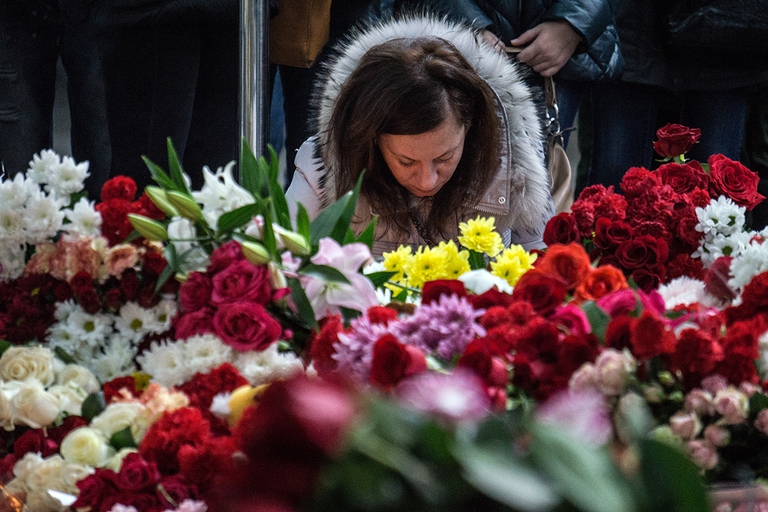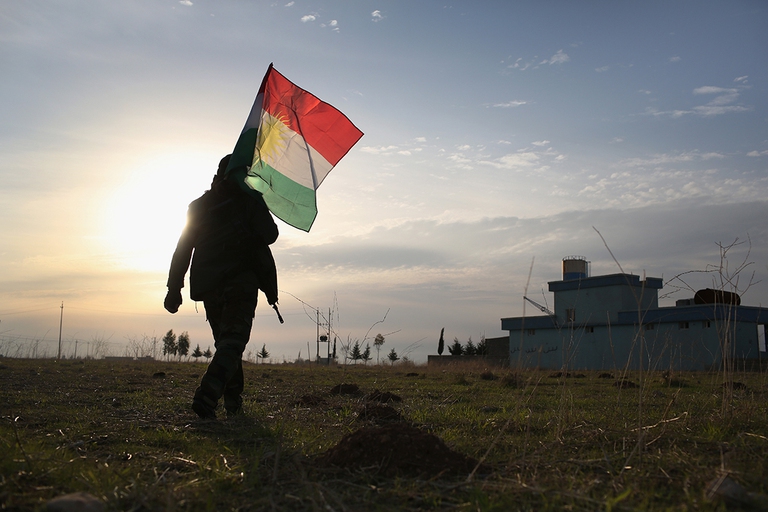
La guerra in Siria dura ormai da sei anni: ecco le dieci date spartiacque di un conflitto che ha provocato 321mila morti e quasi cinque milioni di profughi.
In 2015, the Islamic State (Isis), or DAESH – the acronym of the Arabic words for Islamic State of Iraq and the Levant (Al Dawla Al Islamiya fi al Iraq wa al Sham) with which it renamed itself from 2013 to 2014 – has brought terror and brutality beyond the areas that are under its
In 2015, the Islamic State (Isis), or DAESH – the acronym of the Arabic words for Islamic State of Iraq and the Levant (Al Dawla Al Islamiya fi al Iraq wa al Sham) with which it renamed itself from 2013 to 2014 – has brought terror and brutality beyond the areas that are under its direct control.
On 31st October an airplane of the Russian airliner Metrojet crashed in the Sinai peninsula, Egypt, killing 228 people. Both the US and the UK state that the crash was caused by the explosion of a bomb aboard the plane. The incident was claimed by Isis. On 12 November the Islamic State carried out a terrorist attack in a residential district in Beirut, Lebanon, that killed 44 people. Finally, on the day after Beirut attacks, Friday, 13 November, a series of assaults hit Paris’ city centre, in France, causing more than 130 deaths.
The ascent of the Islamic State dates back to June 2014 when the terrorist group, founded by Abu Musab al Zarqawi from a branch of Al Qaeda eight years before, self-proclaimed caliphate. It declared that its goal is to rule ancient Mesopotamia and bring the Jihad, the holy war, to the world in order for the radical interpretation of the Sunni Islamic religion to take root despite unbelievers. This plan would justify every act of violence against other Muslims (in particular Shiites) as well as non-Muslims who have had the “bad idea” of “interfering” in the project. So, it’s not a chance that most of the victims of the Islamic State are Muslims and that almost the entire Arab community condemned their extreme and limitless violence wrongfully perpetrated in the name of Allah and the Koran. According to the US counter-terrorism center, between 82 and 97% of terrorism victims worldwide are Muslims (2005-2010).
When it was proclaimed in June 2014, the Islamic State controlled an area of about 210,000 square kilometres, between Iraq and Syria, under the leadership of caliph (“successor to Muhammad”) Abu Bakr al Baghdadi. According to American armed forces, today, it would include part of Iraq (about 14,000 square kilometres). According to a source of the International Red Cross, the terrorist group would control the lives of over 10 million people who are obliged to live according to a strict interpretation of the Sharia. Those who are not Muslims have to pay a special tax, they have to convert or else they’re killed.
Today, Jihadists who fight for the Islamic State and are active in Syria and Iraq would be between 20,000 and 32,000, while the Isis victims over the months would be about 10,000. However, according to Iraqi expert Hisham al Hashimi just 30% of terrorists would have chosen to devote a life to fighting for the Isis for ideological reasons. Many of them would have been obliged to enlist out of fear or would have chosen this career for money. The foreign fighters – i.e. young Muslims of second or third generation who were excluded from the societies where they’ve grown up or foreign people converted to Islam – who fought for the Islamic State would be 28,000 people and Western people would be 5,000. These include Jihadi John, the British executioner who shared a number of videos on the Internet where he beheaded people in the last few weeks. Jihadi John would have been killed the day before Paris attacks by an American drone in Raqqa, Syria.
Mainly from oil produced from wells taken away from the Iraqi government, particularly around the city of Mosul. That’s why the Islamic State is world’s richest terrorist group with a daily income of million dollars. But that’s not all. Other sources of income are kidnappings that in 2014 accounted for at least 20 million dollars. And then extortions, looting, threats.
The Islamic State isn’t ally of any government or organisation and for this reason it’s uncontrollable and it’s a threat to everyone’s interest. But, many countries use it as pawn to deal with domestic policy issues instead of identifying it like an enemy that should be defeated. According to what was reported on Limes by Mario Giro, Secretary to the Ministry of Foreign Affairs, the only people to understand how dangerous the Islamic State is are Kurds. “There’s only one common enemy that rose in the power vacuum”, says Giro. “The negotiation originates from our awareness of this and that’s why it should involve Russians and Iranians too”. It seems that this awareness became established at G20 summit in Antalya, Turkey. US president Barack Obama defined Isis “the face of evil” and that’s why it should be destroyed. Just to start, it’s necessary that forces that have been divided so far such as the US and the EU on one hand and Russia and Iran on the other, sit at the same table and achieve a diplomatic solution to put an end to Syria’s civil war that began in 2011.
Siamo anche su WhatsApp. Segui il canale ufficiale LifeGate per restare aggiornata, aggiornato sulle ultime notizie e sulle nostre attività.
![]()
Quest'opera è distribuita con Licenza Creative Commons Attribuzione - Non commerciale - Non opere derivate 4.0 Internazionale.
La guerra in Siria dura ormai da sei anni: ecco le dieci date spartiacque di un conflitto che ha provocato 321mila morti e quasi cinque milioni di profughi.
A minibus driven by female doctors who are fleeing from the Islamic State becomes a mobile clinic for all women living in camps located in the country’s remotest areas.
Lanciata una vasta operazione militare da parte delle forze irachene e internazionali. Obiettivo: riprendere la città di Mosul, dal 2014 in mano all’Isis.
Sono più di cinquemila le vittime, tra morti e feriti in Afghanistan, dall’inizio dell’anno. Le Nazioni Unite lanciano l’allarme, parlando di “cifre record”.
Orlando, a city in Florida of over a quarter million inhabitants, was theatre to a shooting that killed 50 people in the early hours of Sunday the 12th of June. The attack took place in a gay nightclub, Pulse, and was perpetrated by 29-year-old Omar Mateen, who was shot and killed by Orlando police. At the
Il bilancio provvisorio è di oltre cinquanta morti e altrettanti feriti. L’esplosione in un quartiere sciita di Bagdad, in Iraq.
The Palestinian national flag has been banned from the 2016 Eurovision Song Contest. In the list of banned flags, there’s also the terrorist organisation ISIS. 46 European countries will take part in the 2016 edition, which final will be held on the 14th of May in Stockholm, Sweden. So, during the event, the flag of the Middle East
Il 19 aprile inaugura l’installazione che vede la ricostruzione in 3D dell’arco di trionfo di Palmira a Trafalgar Square, Londra. Con una tecnologia che è anche un po’ italiana
Syrian regime forces have regained control of the city of Palmyra, ten months after its capture by the so-called Islamic State (ISIS). The Islamist militants were driven out of the ancient site on the 27th of March following three weeks of intensive military operations backed by Russian air strikes and Lebanese militias. During its










